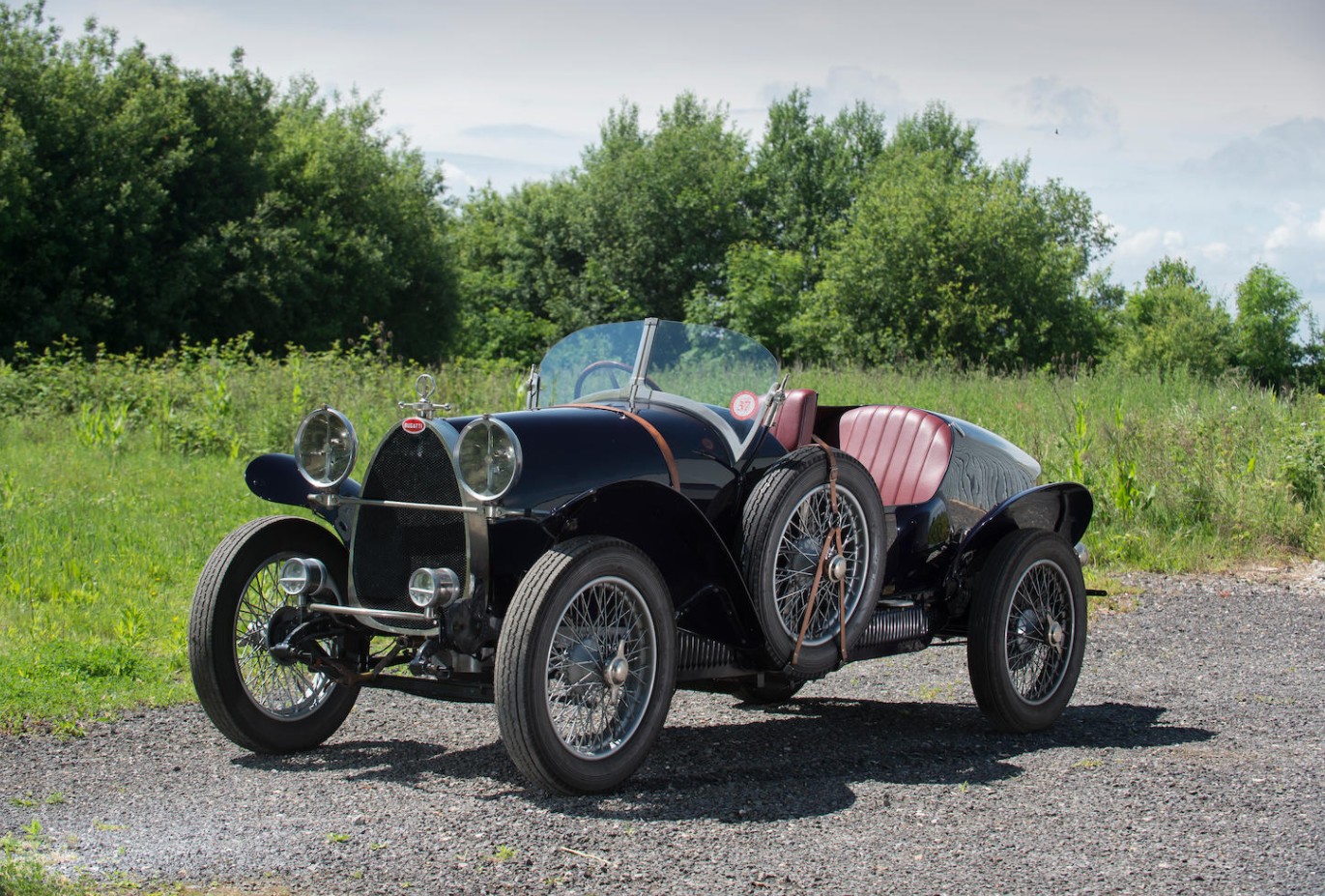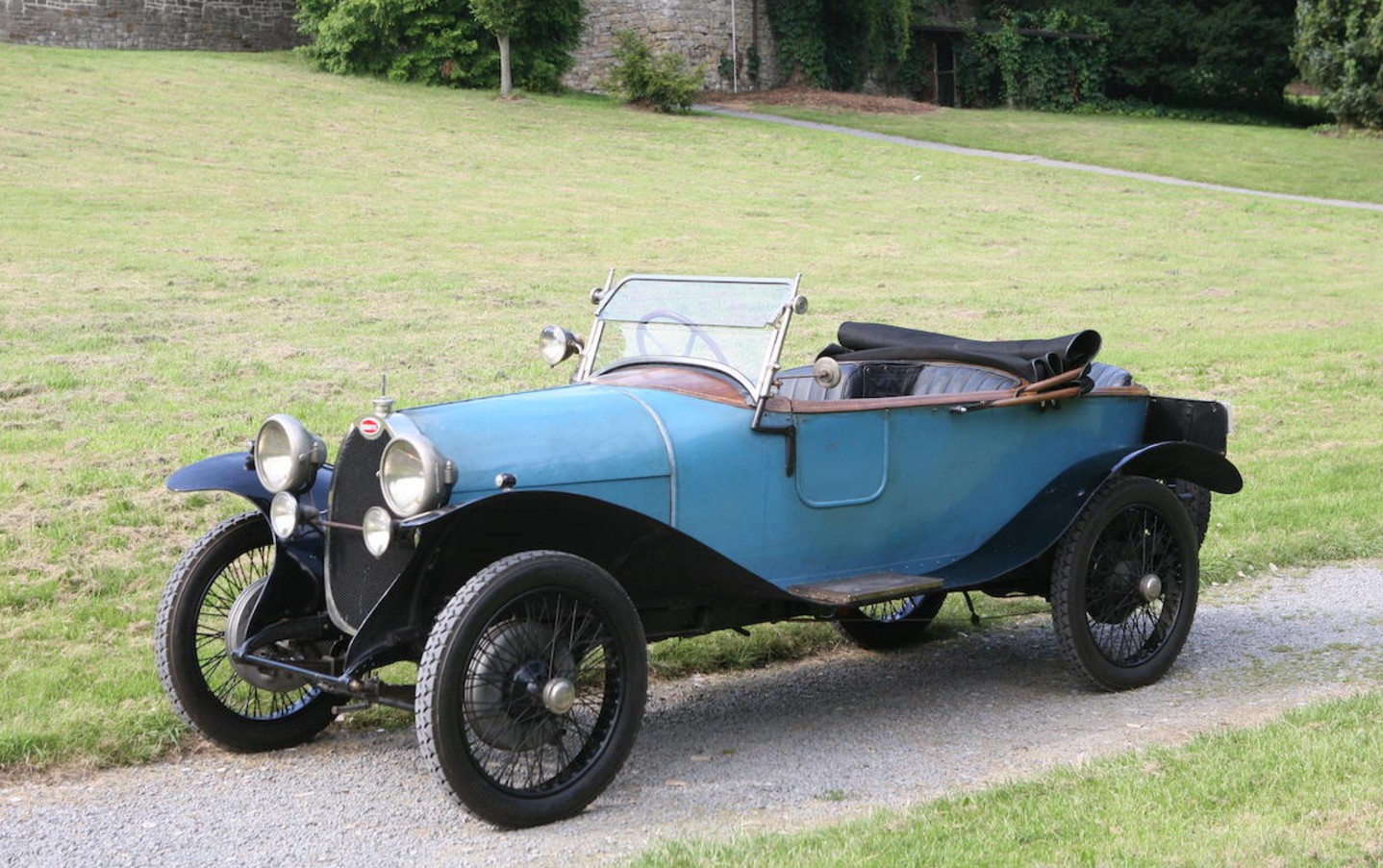1923 Bugatti Type 23 Brescia Modifie Torpedo by Lavocat et Marsaud
Offered by Bonhams | Chichester, England | June 30, 2017
Bugatti Brescias are so tiny. They’re like pocket-sized exotics. The “Brescia” name was applied to post-WWI Bugatti Type 13s. The Type 13 entered production in 1910 and went on hiatus for the First World War. Post-war, it soldiered on through 1926.
In 1920, Bugatti debuted the Type 23 Brescia, which had a longer-wheelbase. It’s powered by a 1.5-liter straight-four that made enough power to propel this car to approximately 70 mph (!). The body is a racy torpedo from coachbuilders Lavocat et Marsaud. It’s such a tiny car that the two seats contained within are offset, so the passenger sits slightly behind the driver.
Remarkably, this car retains its original bodywork and most of its original components, something that not many Brescias do (mostly because many of the Type 23 cars were later shortened to Type 13 configuration). The third (and most recent) restoration was completed in 2010. Only about 200 of these were built and only 19 are known to remain, with this being among the most original. It should bring between $710,000-$840,000. Click here for more info and here for more from this sale.
Update: Not sold.



